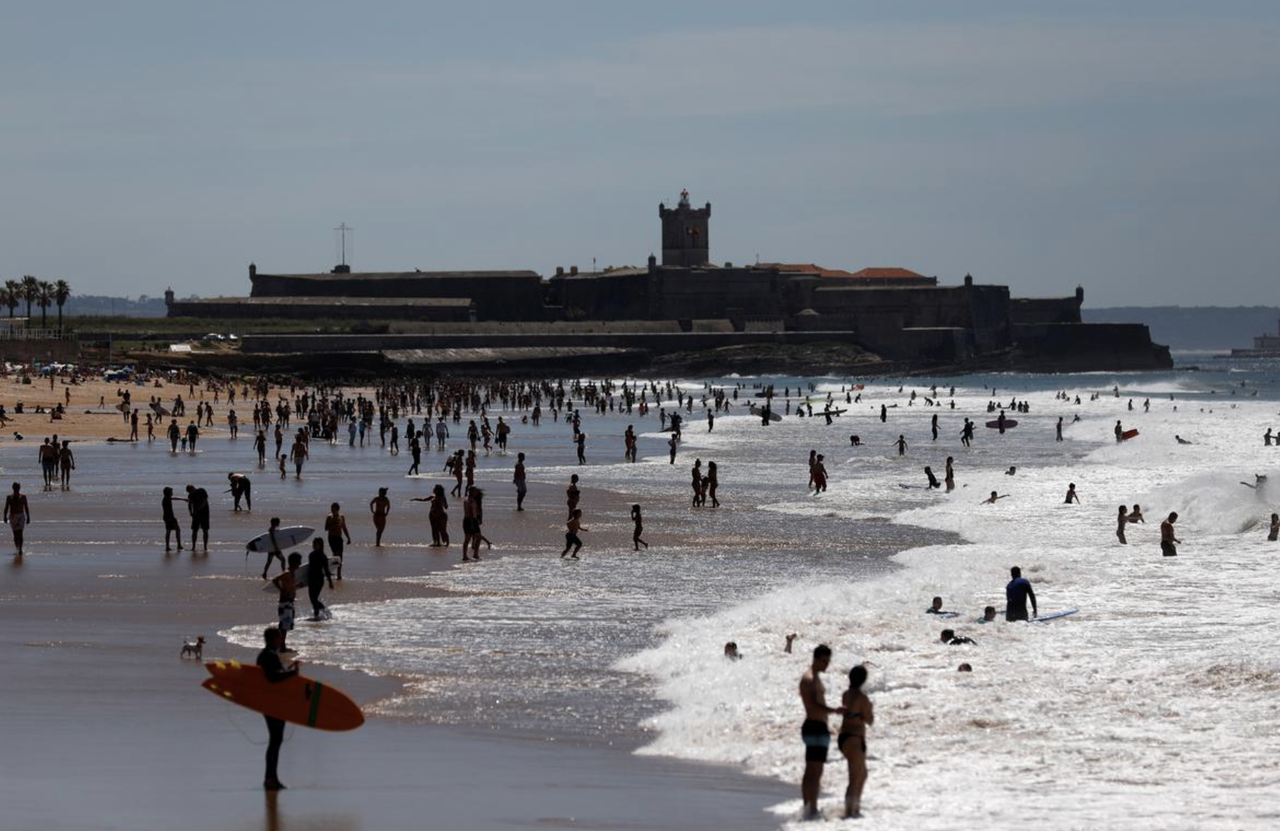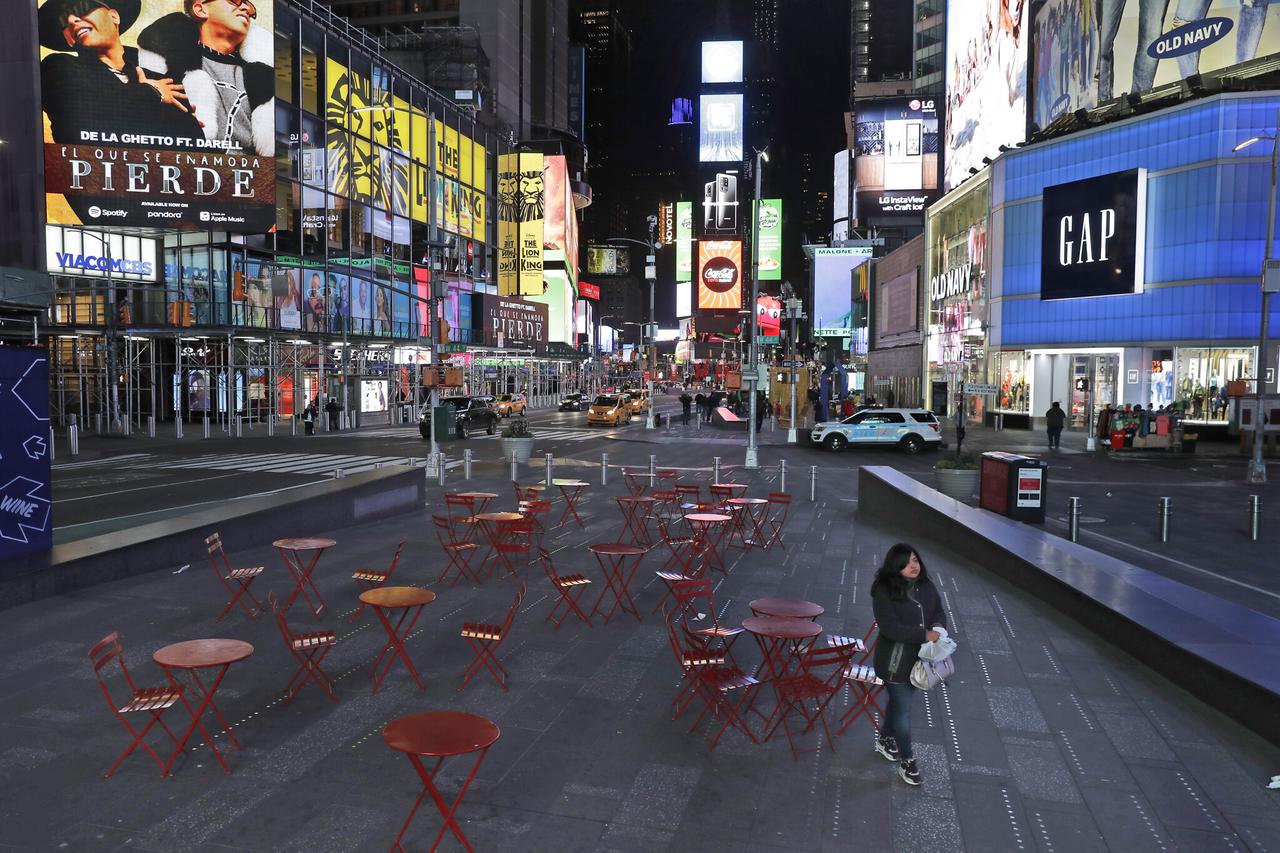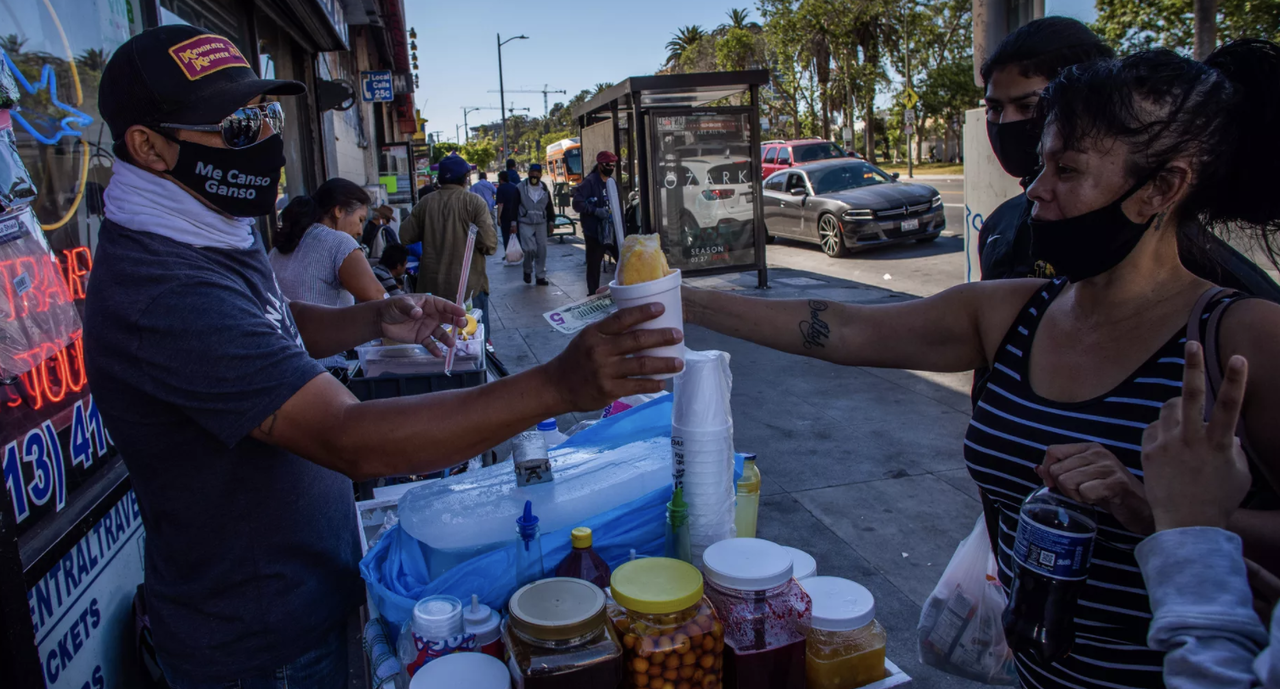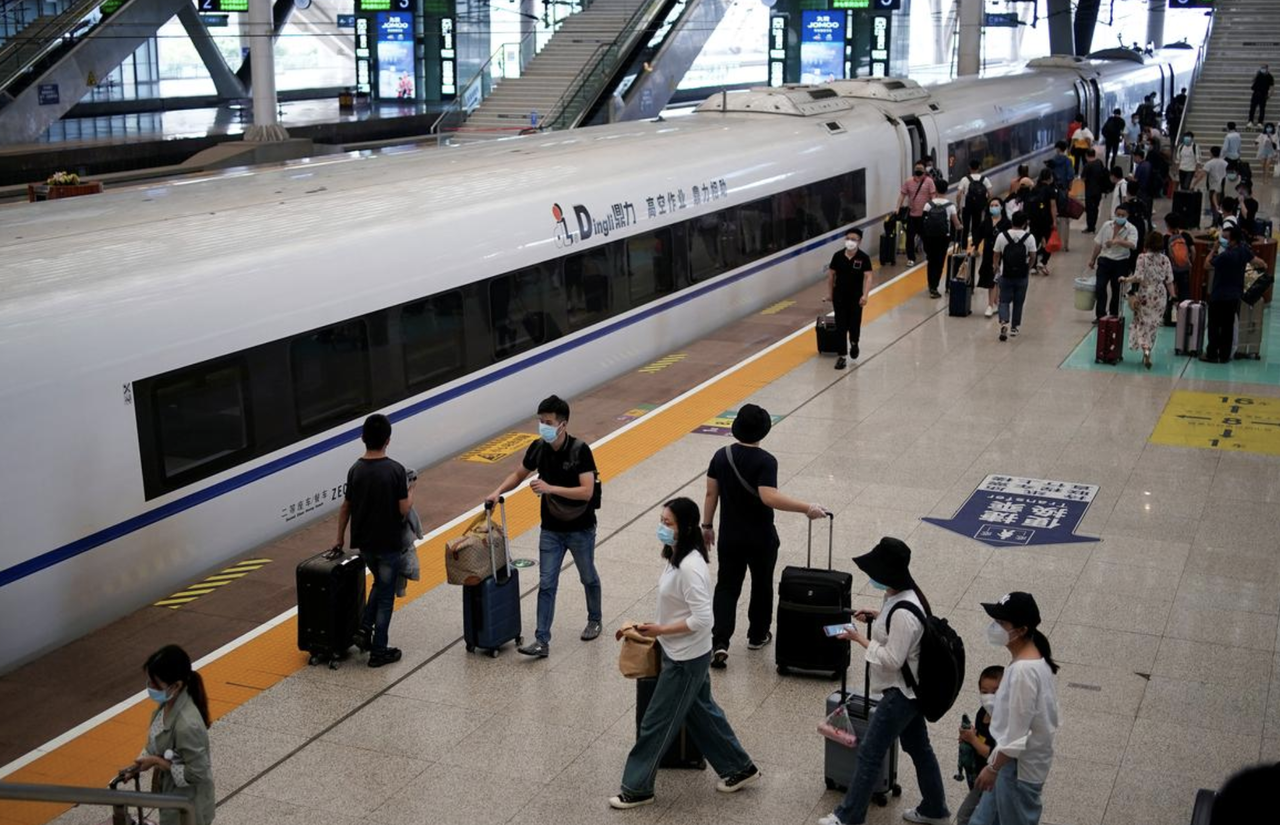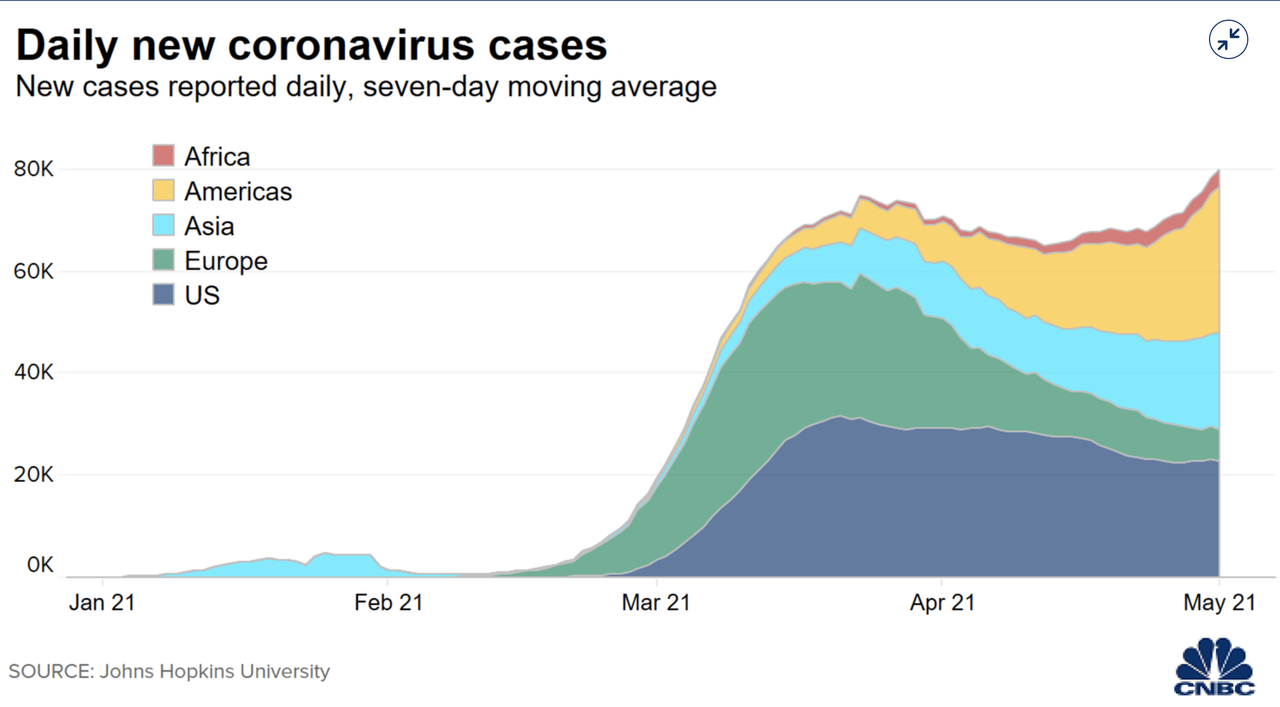Portuguese Enjoy “First State-Sanctioned Beach Day” Since COVID-19 Outbreak Started: Live Updates
Tyler Durden
Sat, 05/23/2020 – 14:28
Summary:
- Beaches reopen in Portugal as lockdown slowly eased
- Kuwait raises fine for not wearing facemask to 16k
- WaPo cites study claiming 24 states at risk for ‘second wave’
- Italy ways reopening different regions at different speeds
- Many more young people dying in Brazil, developing world vs. US
- PM Johnson pressured to fire top advisor for ‘violating’ quarantine rules
- Japan to completely lift state of emergency nationwide on Monday
- Cali court upholds state order to close churches
- Brazil, Russia in No.2, No.3 spots after US
- Russia case total tops 335k
- New York reports fewer than 100 deaths for 1st time since March
- Long Island might reopen as soon as Wednesday
- Nearly 9% of prisoners in Michigan test positive
* * *
Update (1415ET): While millions of Americans spend MDW trapped inside, the Portuguese are enjoying their first weekend back at the beach.
Reuters reports that families and friends flocked to the country’s beaches with surfboards and picnic baskets in tow on Saturday for the first “officially state sanctioned beach weekend” of the year.
Portugal, with its 10 million pop., reported just 30,500 cases, and 1,300 deaths. In both cases, it’s outbreak wasn’t nearly as devastating as neighboring Spain.
Portugal’s state of emergency began on March 18, and after six weeks, the government started lifting restrictions in 15-day intervals earlier this month.
Beachgoers interviewed by Reuters claimed that “most [people] are behaving” though, of course, they managed to find someone who went on the record with their worries about the possibility of the lockdown being reimposed in June.
“It’s so great to see the sea and get some sun after two months,” said Catarina, who arrived to Carcavelos Beach, half an hour from Lisbon, at 9 a.m. with her husband and daughter.
But despite her relief, Catarina wasn’t sure this newfound freedom could last long.
“Most are behaving … but there are a lot of groups, and that’s what causes contagion, isn’t it? I don’t know, by next month I think we’ll all be back in our homes,” she said.
The government, for its part, has promised to continue with the reopening so long as the numbers keep falling. So far, instances where lockdowns have been reimposed are rare – but it has happened.
* * *
Update (1300ET): As the outbreak in Iran wanes, Gulf States, including tiny Kuwait, are having a surprisingly hard time keeping the virus from spreading, despite strict curfews and mandatory mask laws. On Saturday, Kuwait recorded 900 new cases of the novel coronavirus, raising the country’s infection tally to 20,464, the Kuwaiti news agency KUNA reported. The Health Ministry also announced 10 more deaths from COVID-19, raising Kuwait’s death toll to 148. Meanwhile, not wearing a facemask is punishable by jail, or a fine up to $16k.
Meanwhile as the number of new cases in Italy ticked higher, the government is weighing whether the next phase in Italy’s relaxation of emergency measures may proceed at different speeds in various zones, with some northern areas temporarily excluded from a reopening.
* * *
We begin what looks to be a dreary Memorial Day Weekend with a new study amplified by the Washington Post claiming that roughly half of US states actually remain at risk for a serious rebound, as critics seize on the jump in new cases seen in Texas as justification that the state re-opened too early, even as the measures remain broadly popular within the state.
Georgia, too, has largely avoided the disastrous consequences promised by Dr. Fauci and many of the doctors and scientists regularly appearing as ‘independent analysts’ on MSNBC and CNN (while the doctors and scientists on Fox News largely praised what has turned out to be a winning political gamble by Georgia Gov. Brian Kemp.
A new model produced by researchers at Imperial College London estimated that the “R” figure – an estimate of the rate at which the virus is spreading in a given county or state – is above 1 (meaning the virus is still expanding) in 24 states. As some might remember, Imperial College’s models have already been proven to be flawed (not just incorrect, but critics have taken issue with certain parameters they argued were unrealistic).
Even WaPo acknowledges that the risk of a second wave of infections projected by the model fails to factor in social distancing, the wearing of masks, and other factors that might impact the spread of the virus. As Nicolas Kristof said earlier this week, “epidemiology is full of puzzles”.
In New York, Gov Cuomo announced during Saturday’s press briefing…
Holding a briefing with updates on #Coronavirus. Watch Live: https://t.co/6om3Qm8ZCA
— Andrew Cuomo (@NYGovCuomo) May 23, 2020
…that for the first time since March, his state has reported fewer than 100 virus-linked deaths, with 84 confirmed over the last 24 hours. That’s compared with 109 yesterday, as hospitalizations and ICU admissions also continued to decline.
“It’s a sign we’re making real progress and I feel good about that,” Mr Cuomo said, adding that earlier in the crisis a doctor had told him “if you can get under 100, I think you can breathe a sigh of relief.”
Cuomo said during the briefing that Long Island – ie Suffolk and Nassau Counties – could start reopening as soon as Wednesday as he pleaded with more younger people to get tested.
Over in the UK, where lockdowns have been much more strictly enforced than in the US, PM Boris Johnson is facing pressure to fire one of his most trusted advisors, Dominic Cummings, after Cummings purportedly violated the lockdown rules (according to reports in the famously pugnacious British tabloid press) to visit his parents. Cummings insists that he acted “reasonably” and didn’t violate the rules.
With Japan’s state of emergency nearing its end as the number of new coronavirus cases dwindles to mere dozens per day, scientists are wondering how PM Shinzo Abe managed to reap so much success with so littler effort. After imposing the order months after the rest of the US, Europe and China, Japan’s “State of Emergency” was always fairly lax since the constitution can’t prohibit businesses from operating or Japanese people from leaving their homes.
According to Japanese media reports, Abe is planning to lift the last remnants of his state of emergency order, which mostly affected the country’s worst-hit areas like Tokyo and nearby prefectures, as well as Hokkaido.
Per the Japan Times:
After observing the situation over the weekend and hearing opinions from health experts, Prime Minister Shinzo Abe will formally decide what to do with the emergency for Tokyo and Hokkaido, as well as Kanagawa, Chiba and Saitama prefectures, the last remaining areas under the measure among the country’s 47 prefectures, officials said Friday.
As a reminder, here’s how Japan’s approach compared with the US and Europe:
No restrictions were placed on residents’ movements, and businesses from restaurants to hairdressers stayed open. And even as nations were exhorted to “test, test, test,” Japan has tested just 0.2% of its population — one of the lowest rates among developed countries. Yet the curve has been flattened, with deaths well below 1,000, by far the fewest among the G7 nations. While the possibility of a more severe second wave is ever-present, Japan is set to leave its emergency in just weeks, and likely to exit completely as early as Monday.
As Japan prepares to exit its state of emergency and shift its focus to reviving its moribund economy and preparing for next year;s “2020 Games”, China reportedly confirmed zero new coronavirus cases for the entire mainland yesterday, according to data released Saturday morning in Beijing. This is the first time the country hasn’t reported a single new case – foreign or domestically infected – since the beginning of the outbreak.
Meanwhile, officials in Wuhan told Reuters that the CCP had conducted 1.5 million coronavirus tests on Friday, a staggering number, putting the city well on its way to testing all 11 million residents over an outbreak that local officials insist involved just 6 cases.
As we noted yesterday, Brazil is now home to the second-largest outbreak besides the US, though, given the lax containment measures applied across the country and the fact that testing is only just ramping up, many suspect that the real total probably is far higher than that of the US.
In the latest sign of just how devastating the outbreak has become in Brazil, where health-care resources are being increasingly stretched, and in some areas – particularly in Amazonas, where reports of mass graves and corpses languishing in homes and on sidewalks have made their way into the western press, just like the stories of the dead bodies littering the streets in parts of Ecuador.
After surpassing Russia yesterday, Brazil and Russia now hold the No. 2 and No. 3 spots for most confirmed cases:
One indication of just how widespread the virus has already become in Brazil is the surprising number of young, healthy people who are experiencing severe symptoms requiring hospitalization, and often resulting in death. The rates of healthy young people succumbing to the virus are much higher in the developing world, where access to potentially life-saving care is more limited, as WaPo reported
In Brazil, 15% of #covid deaths have been people under 50 -a rate more than 10x greater than in Italy or Spain. In Mexico, nearly 25% of the dead have been between 25 & 49. In India, officials reported this month that nearly half of the dead were
https://t.co/48lJM6rL5y — Athalia Christie (@AthaliaChristie) May 23, 2020
Circling back to the US, as President Trump called for all states to immediately allow the resumption of church services, a federal appeals court on Friday declined to lift California Gov. Gavin Newsom’s temporary restrictions on in-person church services during the coronavirus pandemic, with the court ruling they did not selectively target religious activities. We suspect a more conservative federal judge will reverse this ruling somewhere along the line.
As we pointed out earlier this week, thanks to Brazil, the US is no longer the biggest contributor to the number of new cases reported each day.
Source: CNBC
As we also reported yesterday, Dr. Birx said the Washington DC metro area has the highest rate of infected people in the country, the latest example of how the coronavirus can be confusing. Washington DC and the surrounding area have imposed some of the tightest and longest restrictions in the entire country, yet the rate remains the highest, much lower than the rate in Georgia, which has aggressively reopened.
District of Columbia (including northern #Virginia and two #Maryland counties) is the top metro area hot spot, according to Dr. Birx. Also concerned about Chicago.
— Steve Herman (@W7VOA) May 22, 2020
“A dramatic decline across the states” in percent positive per state, says Dr. Birx. #CoronavirusUSA pic.twitter.com/qTWnkLepxc
— Steve Herman (@W7VOA) May 22, 2020
The coach of Georgetown men’s basketball team, Patrick Ewing, has tested positive for the virus, the schools said.
Finally, in Michigan, nearly 9% of prisoners in the state DoC system have tested positive for the virus already, with thousands of tests waiting to process.
